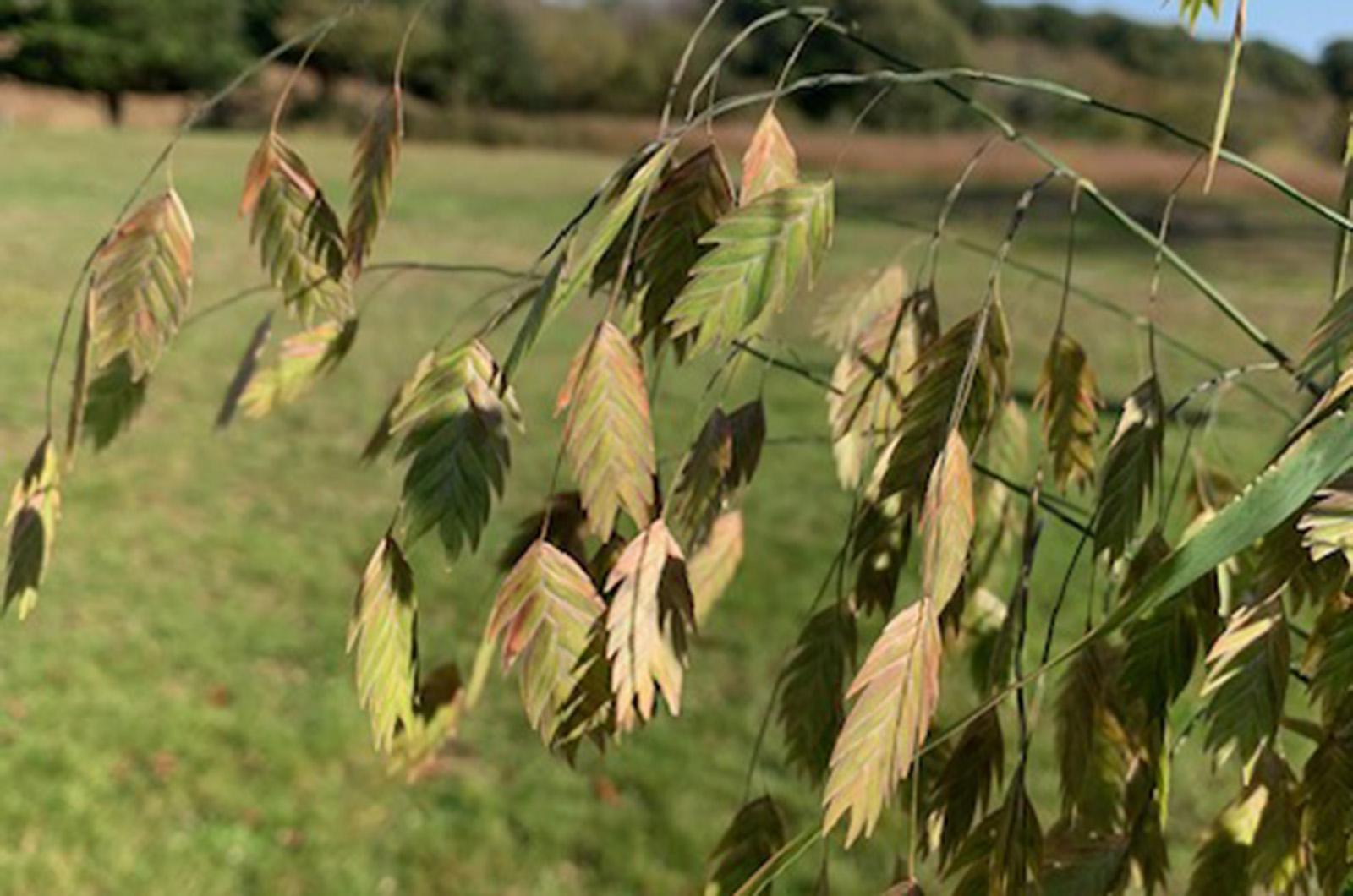There was no need for anyone to sow these wild oats.
Indeed, these sea oats somehow sowed themselves. That is one possible explanation for the appearance this year of chasmanthium latifolia. This plant was recently observed for the first time in the butterfly garden at Felix Neck, surprising me with its presence. While reminiscent of the sea oats found on southern beaches, I was unaware that we had a sister species this far north.
Chasmanthium latifolia is known more commonly as northern sea oats, upland oats, inland oats, wood oats, spangle grass, flathead oats, Indian oats, river oats and — saving the best for last — “fish on a fishing pole.” Sometimes the species is confusingly just called sea oats, though this name covers two different — though similar-seeming — plants. The second type of sea oats, uniola paniculate, is a seaside species while the other is known to be present here in the uplands and along rivers.
A native grass that has unique flattened flower heads called panicles, northern sea oats are easy to spot and difficult to dismiss. They are artistic-looking and creatives favor them for floral arrangements.
Those panicles start green and, at this time of year, turn golden and shimmer or move with the wind or any sort of rustling. Many folks plant these species in their gardens because they add structure, movement, and both fall and winter interest when other plants go bare.
Not at all related to the oats that we regularly consume as a grain for breakfast, northern sea oats do have sustenance value for people and wildlife. As an Indigenous food, they were consumed by the Cocopah tribe, known as the River People, who lived along the lower Colorado River delta. According to the Native American Ethnobotany database, they made it into an oat meal by using it to make a porridge and ate the seeds, both fresh and when stored as a winter food. Modern wild food aficionados also suggest that the seeds can be processed as a cereal grain or as flour.
Some wildlife partakes of its nutrients; though, surprisingly perhaps, deer typically don’t favor it. And since northern sea oats are pollinated by the wind, the plant attracts few nectaring insects. The ones that it does entice are mainly those that consume its leaves. Birds and rodents munch northern sea oat seeds, and the caterpillars of a few types of skipper moths and butterflies gobble the greens. Cattle and other grazers will nibble on the plants, though northern sea oats are not known as a superior forage specie.
The initial scientific classification for this plant was uniola latifolia and made by French botanist Andre Michaux in the 18th century. It was revised by modern American biologist Harris Oliver Yates, who reevaluated its place in botanical nomenclature and rechristened it chasmanthium latifolia. That name translates to “wide-leafed yawning flower.”
Though Mr. Yates may have seen this species as a yawner, I contend that in the world of grasses, it may just be the G-OAT.
Suzan Bellincampi is Islands director for Felix Neck Wildlife Sanctuary in Edgartown and the Nantucket Wildlife Sanctuaries. She is also the author of Martha’s Vineyard: A Field Guide to Island Nature and The Nature of Martha’s Vineyard.




Comments
Comment policy »